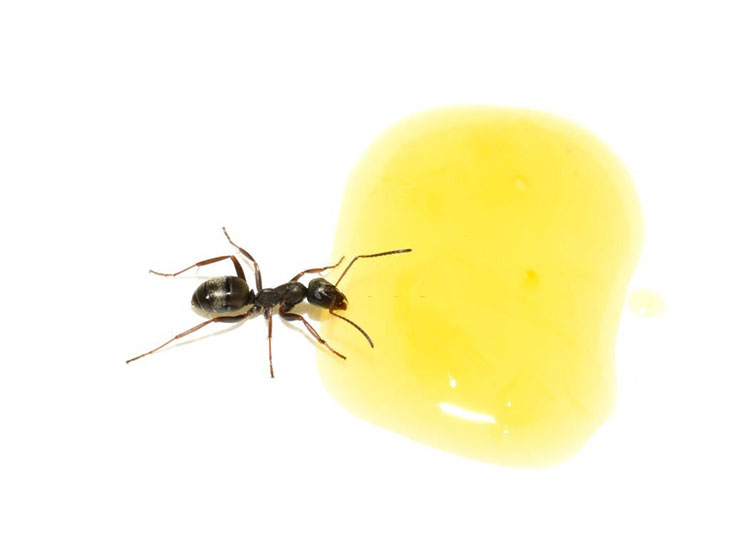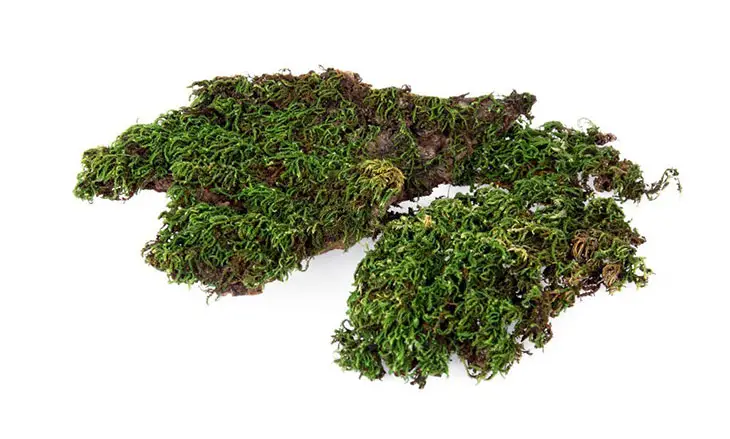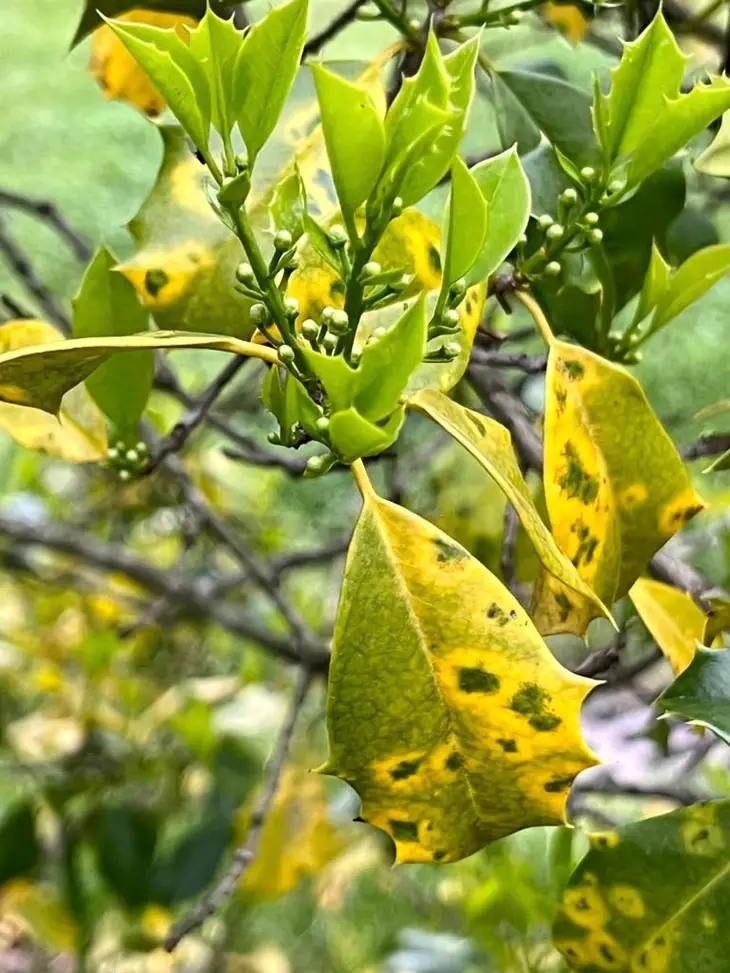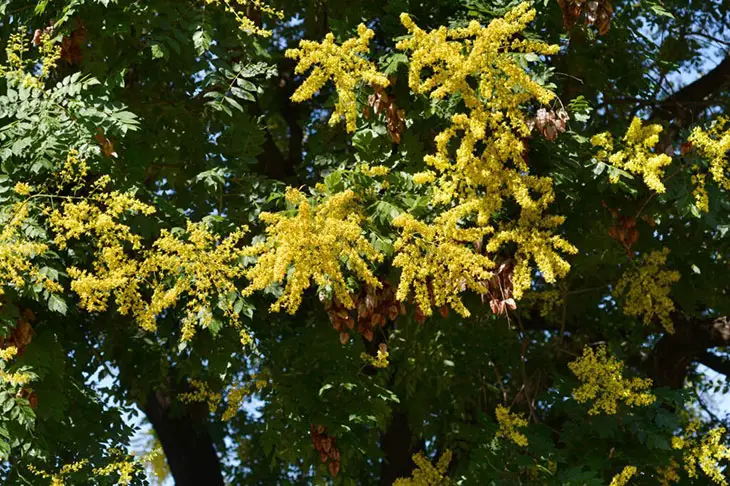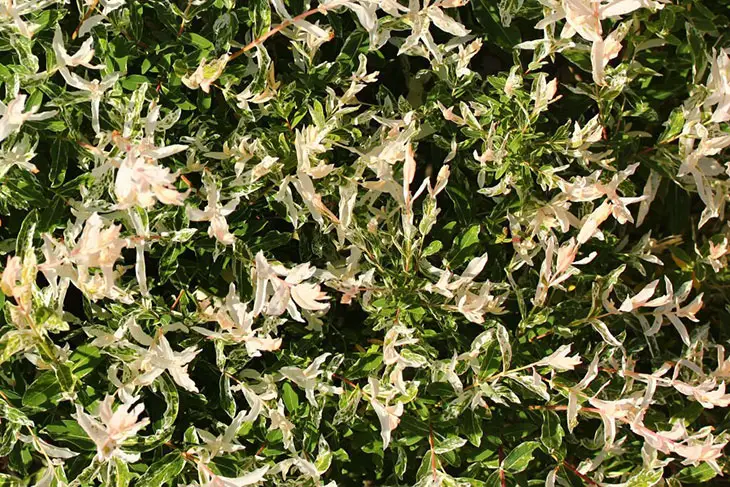
Dappled willow belongs to the willow family. Like any other plants, these dappled willows, the deciduous shrubs, come with their own challenges.
Here, you’ll find valuable insights into 17 common problems with dappled willow.
My goal is to simplify these potential problems so that gardeners of all levels can grasp them easily. Let’s delve in and help you navigate your gardening journey more smoothly.
Problems With Dappled Willow?
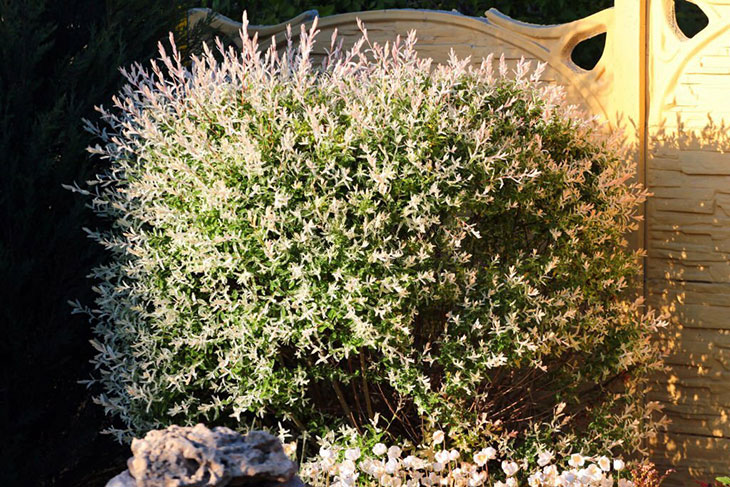
Leaf browning, pest infestations, and slow growth.
Dappled willow tree care, which includes ensuring good drainage, trimming dead leaves, and watching for pests, is vital to handle these problems and help keep your dappled willow, an excellent choice for gardeners, healthy and thriving in your garden.
Here are the details of 17 common diseases and pests you should know to ensure the ideal growth of your plant!
Common diseases
Blights
Blights are common problems that can affect dappled willow leaves. They can make the leaves turn brown or black, sometimes withering and falling off.
These blights are caused by tiny organisms like bacteria or fungi that attack the tree.
To handle blights, remove diseased branches promptly and dispose of them away from your dappled willow. Prune your trees to enhance air circulation.
Hence, it can reduce the risk of blights. Preventative measures include planting in well-draining soil and providing adequate sunlight.
Regularly inspect your dappled willow for signs of blight and practice proper care to maintain their health and striking foliage appearance.
Crown Gall
Crown gall is a disease that can harm dappled willows. It forms unusual growths on the branches or trunk of the tree.
These growths can look like lumps or warts. It is caused by bacteria that enter the tree through wounds or cuts.
To avoid crown gall, be careful when trimming or pruning your dappled willow trees. Ensure that your tools are clean and disinfected to prevent infections.
Doing that lets you keep your dappled willow trees in good shape and free from this disease.
In addition, I recommend you prioritize dappled willow winter care, particularly when addressing concerns like crown gall.
Implementing proactive measures can safeguard the tree’s health during the colder season.
By tending to the plant diligently, you can ensure that the dappled willow landscape in your garden will feature a stunning array of variegated foliage.
Powdery Mildew
Powdery mildew is a common issue with dappled willows. It makes the tree leaves look like they have a powdery white coating.
To prevent powdery mildew, please ensure your dappled willow trees are not too crowded, as good air circulation can help prevent this problem.
Additionally, avoid planting them in areas with too much shade.
The dappled willow sun requirements must be satisfied if you want the problem to disappear. For example, they do best when positioned in spots that get plenty of sunlight but can also tolerate some partial shade.
They thrive when they get direct sunlight for at least part of the day, but they can also tolerate some shade.
Ideally, providing them with about 6 to 8 hours of daylight daily is recommended for optimal growth and vibrant foliage.
Leaf Spots
Leaf spots are common and can make dappled willow leaves look unhealthy. They appear as dark spots on the foliage and can reduce the tree’s beauty.
Leaf spots are often caused by fungal diseases, which thrive in damp & wet conditions.
In my experience, dappled willow in shade may be more susceptible to leaf spots due to the limited sunlight and reduced air circulation in such environments.
To prevent leaf spots, ensure the soil is well-draining and avoid overwatering. Removing diseased branches promptly and cleaning the area around the tree is also important.
This way, you can help your dappled willow maintain its vibrant colors and variegated foliage.
Scabs
Scab is a problem that can affect dappled willow trees. It causes rough, scaly patches on the bark. Scab often occurs in hot and humid conditions, which creates an ideal environment for this issue.
To prevent scabs, prune any diseased branches and maintain good watering practices, as this will help keep your trees healthy even in hot summer months.
Rust
Rust diseases on dappled willow are typically caused by fungi from the Melampsora genus. These tiny fungi land on the dappled willow’s leaves and, especially in warm and humid weather, can infect them.
They create small, colored spots on the leaves that, as the disease progresses, may turn into rust-like growths, often in shades of orange or brown, hence the name “rust.”
This fungal infection weakens the tree by reducing its ability to make food and grow properly. In even more severe cases, it can cause the dappled willow leaves to drop.
To prevent rust on your dappled willow tree, you can prune infected leaves and branches, ensure proper spacing for good air circulation, avoid wetting the leaves when watering, and use plant-safe fungicides as a last resort if the infection is severe.
Cankers
Cankers are like tree boo-boos. They’re areas of damaged or dead bark on tree trunks or branches.
To handle cankers, first, spot them on your trees. They might look like discolored, sunken spots. Then, cut away the infected parts with a sharp tool.
Make clean cuts a bit beyond the damaged area. I normally call it like giving your tree a little surgery.
Afterward, keep your tree healthy with good watering and feeding habits. Avoid injuring the tree. That way, it’s less likely to get cankers.
Keeping an eye on your tree and acting fast if you see any cankers can help it stay strong and healthy.
Water Needs
Dappled willow trees have specific water needs to thrive. They prefer moist soil but not soggy conditions. To determine when to water, a rule of thumb is to check the moisture level of the soil.
Insert your finger approximately two inches deep into the soil close to the tree. Remember water when it feels dry.
When watering, provide adequate water but avoid excessive amounts, as dappled willows do not like standing in water.
Proper watering frequency and ensuring the soil type is suitable for their growth will help your dappled willow trees flourish.
Anthracnose Diseases
Anthracnose diseases show up as dark, soggy spots on leaves. To deal with anthracnose, check your plants for these dark spots, especially in spring or wet weather.
If you find them, trim and remove the infected parts.
Also, avoid wetting the leaves when you water, and make sure your plants have space to breathe. Fertilize and keep your plants strong to help them fight off this disease.
Invasive Roots
Is dappled willow invasive? Yes. Dappled willow roots systems may become invasive if not managed properly.
These roots can spread and potentially disrupt nearby structures, such as garden beds or septic systems.
To control invasive roots, consider planting dappled willows in areas with sufficient space for their growth. In that way, you can control dappled willow tree height.
In addition, regularly inspect the root structure and trim or redirect any roots causing problems.
With careful attention, you can enjoy the beauty of dappled willow trees without concerns about their root systems damaging your garden or structures.
Common pests
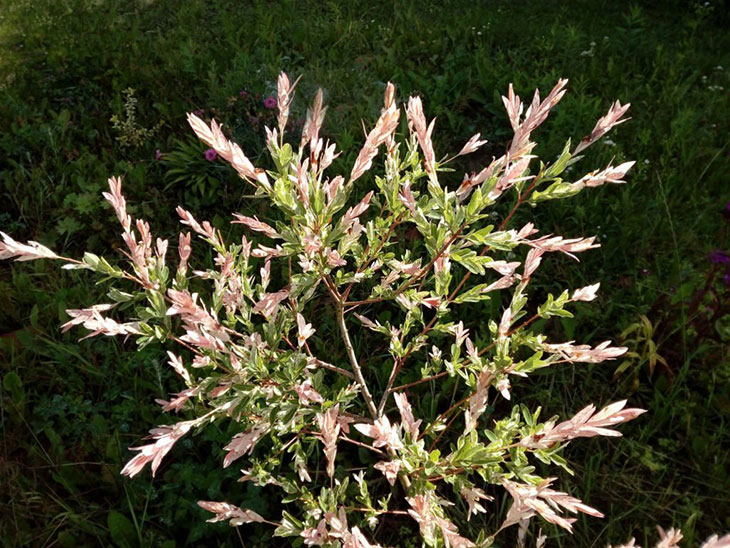
Inspecting the dappled willow tree in winter, as well as throughout the year, can help identify dormant pests that may become a concern during the growing season.
Aphids
Aphids are like tiny garden vampires because they suck the juice out of plants. To handle them, you can give your plants a gentle shower with water to wash them away.
Ladybugs and other friendly insects are natural aphid eaters so you can encourage them in your garden, especially during the hot summer months. If things get serious, you can use insecticidal soap.
Lace Bugs
These bugs are sneaky, and they leave white spots on the leaves. To deal with them, you can spray a hose on your plants to knock them off. Neem oil can also help keep them away, especially in the hot weather.
Beetles
There are many types of beetles that munch on plants. You can pick these critters off your plants by hand or use a trap.
Some beetles, like ladybugs and ground beetles, are your garden’s friends, so don’t harm them. They can help keep your plants healthy.
However, be cautious with beetles like grapevine beetles, which can be garden pests. They can damage your dappled willow tree.
Caterpillars or Sawflies
Like caterpillars on apple trees, these hungry caterpillars on dappled willow trees also love the leaves. If you see them, pick them off gently or use organic pesticides.
Birds also play a role in hunting caterpillars, so enticing them to visit your garden, particularly in the summer, is beneficial.
Leaf Beetles
Leaf beetles chew holes in leaves. You can handle them by picking them off your plants or using a natural pesticide like neem oil.
Maintaining adequate water for your plants can help them resist these pests.
Scale
Scale insects can be a nuisance for dappled willow shrubs. They look like tiny bumps on the branches and leaves and can harm the tree by sucking sap.
To prevent scale infestations, regularly inspect your dappled willow shrubs for any signs of these insects.
If you spot them, consider removing them with neem oil/insecticidal soap.
Borers
Borers are like sneaky bugs that burrow into trees and bushes. They make holes in the wood. Hence, they can weaken the plant and cause trouble.
To deal with borers, check your plants for small holes or sawdust-like stuff near the base or on branches.
If you find any, cut away the infested branches. If things are bad, you might need insect spray.
Also, make your plants strong by giving them enough water and food. Keep dead branches trimmed, put mulch around them, and use special wraps to keep the bugs away.
Additionally, avoid planting your trees in areas with poor soil, as healthy growth can deter these pests. And always watch out for signs of trouble to catch it early!
With proper care addressing the tree’s specific issues and timing, such as during the ideal period from late spring to early summer, the tree will follow its growth structure and proudly display its beautiful foliage..
FAQs
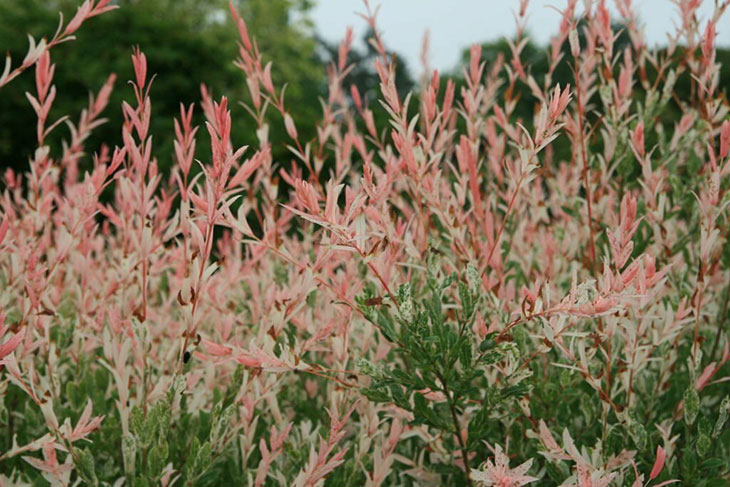
How Big Do Dappled Willows Get?
8 to 10 feet tall. Their growth rate depends on various factors, including soil conditions, watering, and overall care. They can achieve their maximum height in a few years in favorable conditions.
When Do Dappled Willows Bloom/When Does Dappled Willow Bloom?
Late spring to early summer months. That is the time they showcase their vibrant foliage.
To ensure the best display, provide regular watering, especially during dry spells, and place them in partial shade to protect them from excessive sunlight.
These conditions encourage their beautiful blossoms during the ideal growing season.
Conclusion
With this understanding of problems with dappled willow, gardening can be a walk in the park for you.
Don’t be discouraged by obstacles; welcome them as chances to develop and learn throughout your gardening journey!
At the ideal time, when it reaches the maximum growth of its growth stages, the dappled willow’s vibrant foliage color will surprisingly enhance the beauty of any garden, making your patience truly rewarding.
Please don’t hesitate to reach out if you have any further questions or comments. I’ll respond as soon as possible!
